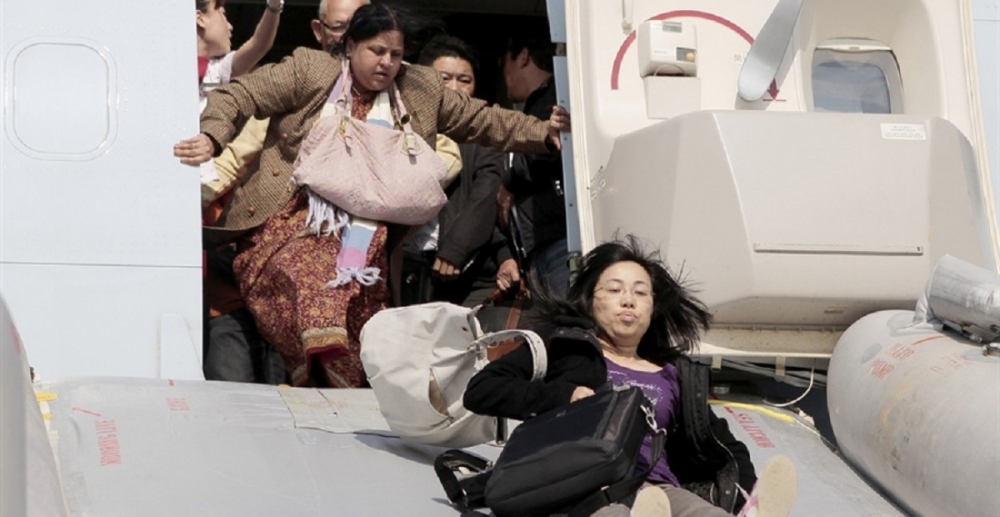|
Hattehyllene må kunne låses før en nødevakuering finner sted. (Red.)
Passengers have role
to play in aviation safety
 The crash of AeroMexico Flight 2341 last month is a reminder to all involved in aviation that our safety work is never done. Many were amazed to learn there were no fatalities among the 103 passengers and crew, although some sustained serious injuries. Actually, most airplane accidents are survivable. That is a testament to aircraft designers and manufacturers, to safety regulators who work closely with the industry and to flight crew who rise to the occasion in an emergency, doing their utmost to get everyone off the aircraft as quickly and safely as possible. Passengers also have a role to play in keeping safe. Those who like to sit in emergency exit rows are familiar with the special responsibilities that come with the extra legroom in the event an evacuation is necessary. But even those who are not asked to directly participate in helping their fellow passengers get out of the aircraft need to be prepared. There are far more passengers on a flight than cabin staff. No matter how good the crew are, they can't look after every passenger. So as passengers, we need to do our part as well. Read the safety card and locate the closest emergency exit - and an alternative. Turn your mobile devices to airplane mode when requested. Follow crew instructions, and above all, when told to evacuate, do not stop to grab your bag from the overhead bin. It slows down the evacuation process for everyone. Luggage may also damage the emergency slides. No one wants to be separated from their bag, but escaping quickly and doing your part to ensure others get out must take priority. Airline accidents are extremely rare. Last year, some 4.1 billion travellers flew safely on 41.8 million flights. There were 45 accidents, of which six involved loss of life, with 19 fatalities among passengers and crew. None of the six occurred on a passenger jet. Based on the 2017 safety performance, on average, a person would have to travel by air every day for 6,033 years before experiencing an accident in which at least one passenger was killed. Aviation safety is built on partnerships and global standards, and for more than 70 years, the International Air Transport Association (Iata) has teamed up with airline members, safety regulators, airports, air navigation service providers and others in the global safety community to help reduce accidents. This year, we are celebrating the 15th anniversary of the Iata Operational Safety Audit (IOSA), the world's first globally-recognised operational safety standard. Every member of Iata must pass an IOSA audit and remain on the IOSA registry in good standing. Last year, the all-accident rate for airlines on the IOSA registry was nearly four times better than that of non-IOSA airlines. Non-members also recognise the value of IOSA. Of the 435 airlines on the registry, 34 per cent are not members of Iata. I call aviation the Business of Freedom as it liberates people to lead better, more fulfilling lives, with virtually none of the risk long journeys used to entail. We need everyone to do their part to help make the Business of Freedom even safer - and that includes passengers. |
mandag 3. september 2018
Evakuering av fly - Curt Lewis
Abonner på:
Legg inn kommentarer (Atom)



Ingen kommentarer:
Legg inn en kommentar
Merk: Bare medlemmer av denne bloggen kan legge inn en kommentar.